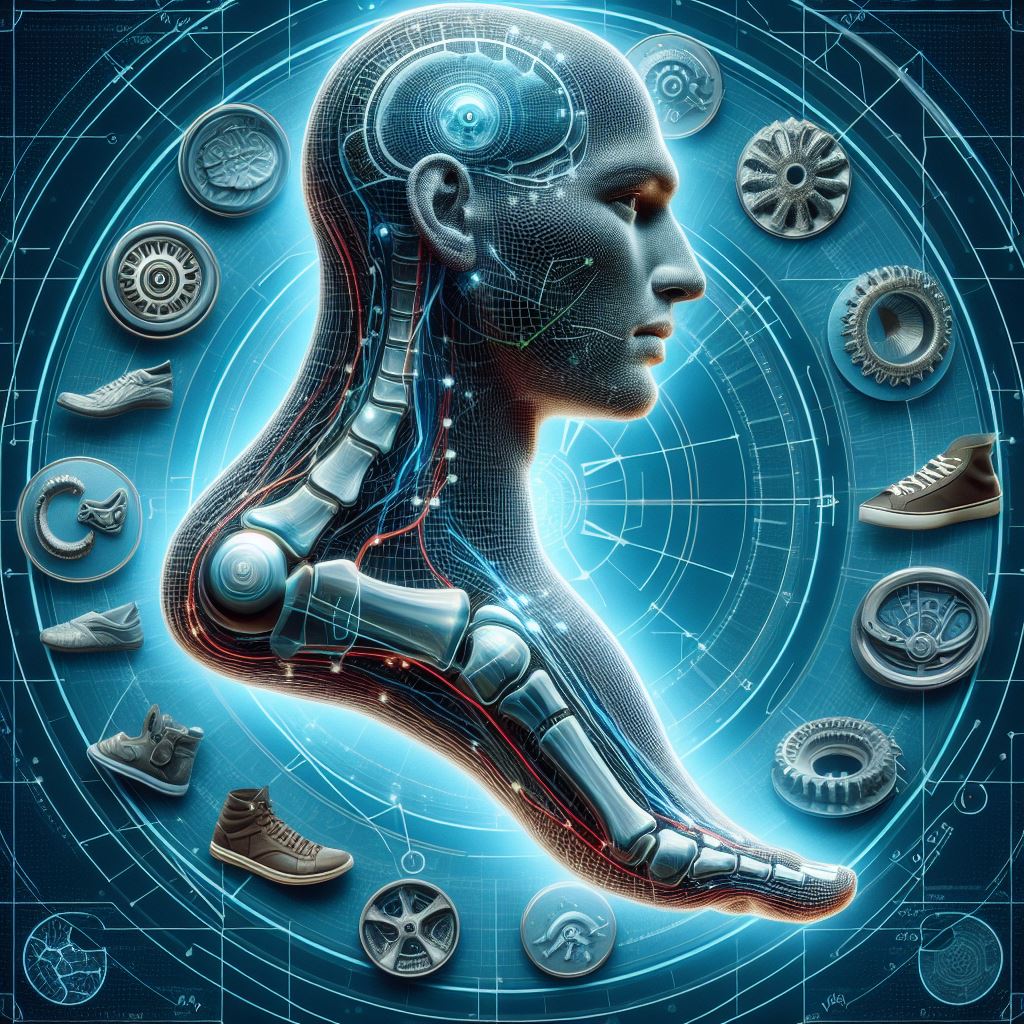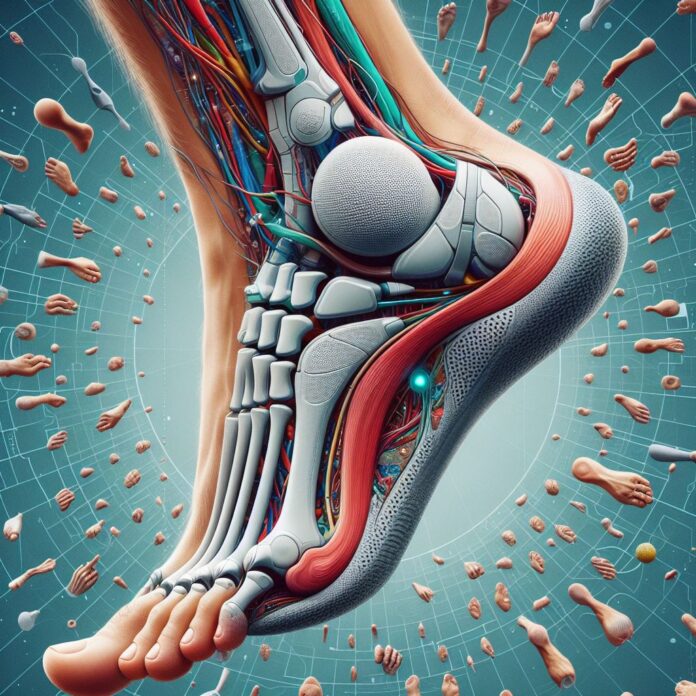The foot is a marvel of human engineering, and its design has inspired countless innovations in the field of footwear. Among these is the concept of “Esfeet,” a term not widely known outside the niche circles of footwear design and biomechanics. But what exactly is Esfeet, and why is it so important in the context of modern shoe design? In this comprehensive article, we’ll decode the intricacies of Esfeet, explore its aligned relation to the foot, and delve into the evolution of Esfeet in footwear design.
The Foot and Its Aligned Relation to Esfeet

Before we can understand Esfeet, we need to look at the human foot and its complex structure. The foot is a masterpiece of form and function, with 26 bones, 33 joints, and more than a hundred muscles, tendons, and ligaments working in harmony to provide support, balance, and mobility.
Anatomy Meets Design
Esfeet is a design philosophy that takes into account the anatomical structure and biomechanical function of the foot. It aims to create footwear that complements and enhances the natural movements and contours of the foot, rather than constraining or altering them. This alignment between the foot’s needs and the shoe’s design is crucial for comfort, performance, and the prevention of injuries.
A Step Towards Comfort and Health
Shoes designed with the Esfeet philosophy prioritize the health of the foot. They are crafted to provide the right amount of cushioning, support, and flexibility where it is needed most. By respecting the foot’s natural anatomy, Esfeet-designed shoes can help to alleviate common foot problems and contribute to overall foot health.
Evolution of Esfeet & It is Essential Role in Footwear Design

Esfeet has evolved over the years, influenced by technological advancements and a growing understanding of foot biomechanics. The role of Esfeet in footwear design has become increasingly essential as consumers demand shoes that not only look good but also promote well-being.
From Function to Fashion
Historically, shoes were designed primarily for protection and functionality. However, as fashion became a more prominent aspect of society, the aesthetic appeal of footwear gained importance. Despite this, the essential role of Esfeet has been to bridge the gap between style and functionality, ensuring that modern footwear meets both the aesthetic desires and the physiological needs of the wearer.
The Technological Revolution in Footwear
The introduction of new materials and manufacturing techniques has revolutionized footwear design. 3D printing, advanced foam compounds, and computer-aided design have allowed for the creation of shoes that closely align with the principles of Esfeet. These technologies enable a level of precision and customization previously unimaginable, resulting in footwear that can adapt to the unique shape and movement of an individual’s foot.
The Science of Comfort
Research in biomechanics and ergonomics has greatly influenced the development of Esfeet. By understanding how the foot interacts with different surfaces and absorbs impact, designers can create footwear that reduces fatigue and the risk of injury. The science of comfort is at the core of Esfeet, as it seeks to harmonize the relationship between the foot and the shoe.
The Future of Esfeet in Footwear Design
The future of Esfeet in footwear design is promising, with emerging trends indicating a continued focus on innovation, sustainability, and personalized comfort.
Personalized Footwear
One of the most exciting developments in Esfeet is the move towards personalized footwear. With advances in technology, it is now possible to create shoes tailored to an individual’s specific foot shape and gait pattern. This bespoke approach ensures the highest level of comfort and support, as each pair of shoes is designed with the wearer’s unique biomechanics in mind.
Sustainability and Esfeet
Sustainability has become a key concern in all aspects of design, and footwear is no exception. Esfeet aligns with this trend by promoting the use of eco-friendly materials and production methods that minimize waste. Sustainable Esfeet-designed shoes not only benefit the wearer but also have a reduced environmental impact.
The Role of Wearable Technology
Wearable technology is another area where Esfeet is making strides. Sensors embedded in shoes can provide valuable data on foot pressure distribution, stride length, and overall gait. This information can be used to further refine the design of footwear, making Esfeet even more in tune with the needs of the foot.
Implementing Esfeet in Shoe Manufacturing
For shoe manufacturers, adopting the Esfeet philosophy requires a balance of creativity, technology, and a deep understanding of human anatomy.
Design Considerations
When implementing Esfeet, designers must consider various factors such as the type of activity the shoe is intended for, the materials used, and the manufacturing process. A running shoe, for example, needs different design elements than a casual walking shoe. Each design must be tailored to the specific needs of the activity while adhering to the principles of Esfeet.
Collaborations Between Designers and Biomechanists
The most successful Esfeet designs come from collaborations between footwear designers and biomechanists. By working together, they can ensure that the shoes not only look appealing but also function in harmony with the foot’s natural movements. This interdisciplinary approach is key to advancing the Esfeet philosophy in the footwear industry.
The Role of Consumer Feedback
Consumer feedback is invaluable in refining Esfeet designs. Wearers can provide insights into the comfort, performance, and overall satisfaction with the shoes, allowing manufacturers to make necessary adjustments. This feedback loop is essential for the continuous improvement of Esfeet footwear.
Case Studies of Esfeet Success
To illustrate the impact of Esfeet, let’s look at a few case studies where this design philosophy has led to successful footwear.
Athletic Performance Enhancement
Several athletic shoe brands have embraced Esfeet, resulting in footwear that enhances performance while reducing the risk of injury. These shoes are designed to work with the natural biomechanics of athletes, providing the support and flexibility needed for high-intensity activities.
Everyday Comfort Achieved
Esfeet is not limited to athletic shoes. Many everyday footwear brands have adopted the philosophy to create shoes that offer superior comfort for everyday wear. These shoes help to reduce foot fatigue and provide support where it’s needed most, making them ideal for people who spend long hours on their feet.
Therapeutic Footwear Breakthroughs
In the realm of therapeutic footwear, Esfeet has been a game-changer. Shoes designed with the Esfeet philosophy can help alleviate the symptoms of foot-related conditions and improve the wearer’s quality of life. By focusing on the anatomical and biomechanical needs of the foot, these shoes provide targeted support and relief.
Conclusion
Esfeet unveiled is more than just a trend; it’s a pivotal movement in the evolution of footwear design. By decoding the intricacies of the foot and its aligned relation to Esfeet, we gain a deeper appreciation for the essential role this philosophy plays in creating shoes that are not only stylish but also supportive & comfortable. As we look to the future, we can expect Esfeet to continue shaping the way we think about and wear shoes, ensuring that the health and well-being of our feet are always a top priority.
You may like reading about the following: Media Bzy
